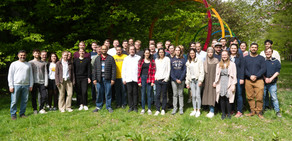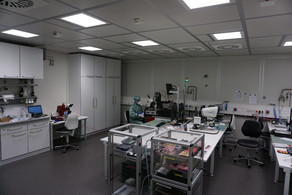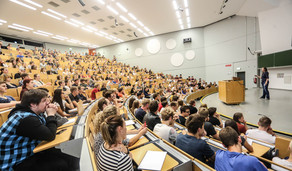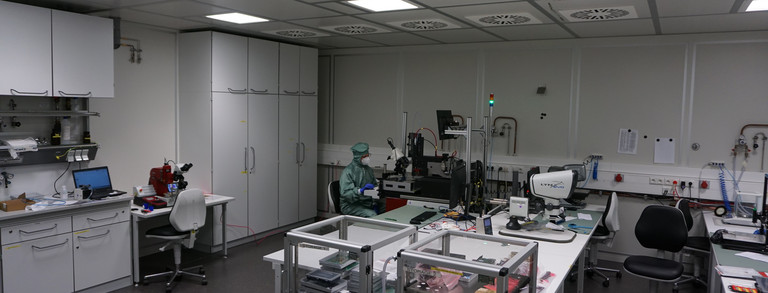Publikationen
2021
| J.-H. Arling et al. [COBRA Collaboration] | Commissioning of the COBRA extended demonstrator at the LNGS | Nucl. Instrum. Meth. A 1010 (2021) 165524 |
2020
| L. Bodenstein-Dresler et al. [COBRA Collaboration] | Quenching of gA deduced from the β-spectrum shape of 113Cd measured with the COBRA experiment | Phys. Lett. B 800 (2020) 135092 [arXiv:1806.02254] |
2017
| J.-H. Arling et al. [COBRA Collaboration] | Suppression of alpha-induced lateral surface events in the COBRA experiment using CdZnTe detectors with an instrumented guard-ring electrode | JINST 21 (2017) P11025 [arXiv:1701.07432] |
| R. Theinert for the COBRA collaboration | Characterization of a large CdZnTe detector with a coplanar quad-grid design | Nucl. Instrum. Meth. A 845 (2017) 181 |
| R. Temminghoff for the COBRA collaboration | Investigation of the Depth Reconstruction and Search for Local Performance Variations with a Large Coplanar-Quad-Grid CdZnTe Detector | IEEE Transactions on Nuclear Science 64 (2017) 1934 |
2016
| J. Ebert et al. [COBRA Collaboration] | Results of a search for neutrinoless double-beta decay using the COBRA demonstrator | Phys. Rev. C 94 (2016) 024603 [arXiv:1509.04113] |
| J. Ebert et al. [COBRA Collaboration] | Characterization of a large CdZnTe coplanar quad-grid semiconductor detector | Nucl. Instrum. Meth. A 806 (2016) 159 [arXiv:1509.02361] |
| J. Ebert et al. [COBRA Collaboration] | Long-Term Stability of Underground Operated CZT Detectors Based on the Analysis of Intrinsic 113Cd β-Decay | Nucl.Instrum.Meth. A 821 (2016) 109 [arXiv:1508.03217] |
| J. Ebert et al. [COBRA Collaboration] | The COBRA demonstrator at the LNGS underground laboratory | Nucl. Instrum. Meth. A 807 (2016) 114 [arXiv:1507.08177] |
2014
| M. Fritts et al. [COBRA Collaboration] | Pulse-shape discrimination of surface events in CdZnTe detectors for the COBRA experiment | Nucl. Instrum. Meth. A 749 (2014) 27 |
Bis 2013
| M. Schwenke et al. [COBRA Collaboration] | Exploration of pixelated detectors for double beta decay searches within the COBRA experiment | Nucl. Instrum. Meth. A 650 (2011) 73 |
| J. McGrath et al. [COBRA Collaboration] | Detecting multi-hit events in a CdZnTe coplanar grid detector using pulse shape analysis: A method for improving background rejection in the COBRA 0 nu beta beta experiment | Nucl. Instrum. Meth. A 615 (2010) 57 |
| T. Köttig for the COBRA Collaboration | Search for neutrinoless double beta decay with the COBRA experiment | PoS ICHEP2010 (2010) 324 |
| J. Dawson et al. [COBRA Collaboration] | Experimental study of double beta decay modes using a CdZnTe detector array | Phys. Rev. C 80 (2009) 025502 [arXiv:0902.3582] |
| J. Dawson et al. [COBRA Collaboration] | An Investigation into the 113-Cd Beta Decay Spectrum using a CdZnTe Array | Nucl. Phys. A 818 (2009) 264 [arXiv:0901.0996] |
| T. Bloxham et al. [COBRA Collaboration] | First results on double beta decay modes of Cd, Te and Zn isotopes with the COBRA experiment | Phys. Rev. C 76 (2007) 025501 [arXiv:0707.2756] |
| H. Kiel for the COBRA Collaboration | Status and perspectives of the COBRA double beta decay experiment | J. Phys. Conf. Ser. 39 (2006) 353 |
| C. Goessling et al. | Experimental study of Cd-113 beta decay using CdZnTe detectors | Phys. Rev. C 72 (2005) 064328 |
| H. Kiel, D. Munstermann, K. Zuber | A Search for various double beta decay modes of Cd, Te and Zn isotopes | Nucl. Phys. A 723 (2003) 499 |





